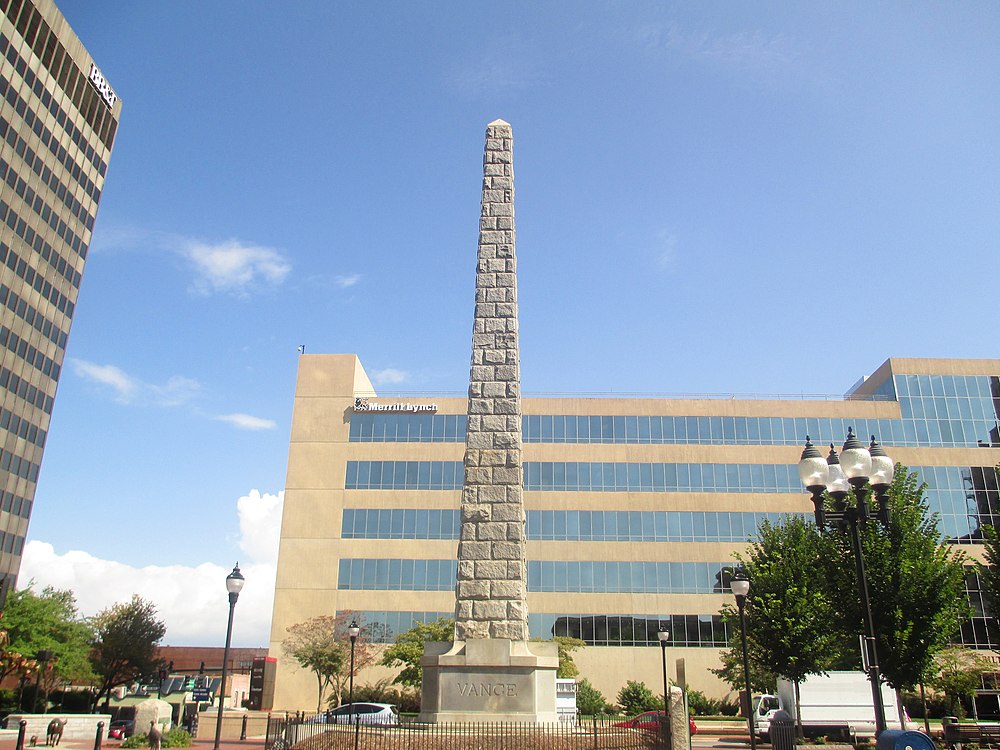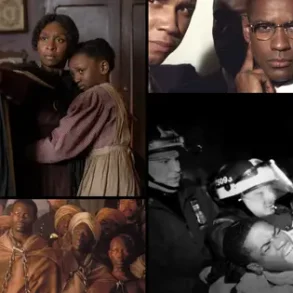
Imprisoned by federal troops shortly after the end of Civil War, North Carolina Gov. Zebulon Vance wrote his friend from jail in a state of despair.
“There are indications that the radicals intend to force perfect Negro equality upon us. Should this be done, and there is nothing I can do to prevent it, it would revive an already half-formed determination in me to leave the United States forever,” Vance wrote.
Just over 30 years later — the same year white supremacists in Wilmington massacred scores of African Americans and overthrew the Reconstruction-era government — the City of Asheville erected a 75-foot-tall monument to honor Vance, a two-time governor who also served in the U.S. Senate. That structure was just outside the courthouse, where enslaved people were sold on the steps on at least several occasions.
On Wednesday, a descendant of one of the enslaved people owned by Vance told a gathering in Raleigh that the monument was “a symbol of power.”
That descendant, Oralene Simmons, served as co-chair of the Vance Monument Task Force, a group that recommended the City of Asheville remove the monument, a suggestion the City Council voted to approve in March 2021. Most of the structure was taken down later that year.
But the statue’s toppling is not settled. The North Carolina Supreme Court heard oral arguments Wednesday in a case brought by the Society for the Historical Preservation of the 26th North Carolina Troops, which is suing to stop the city’s removal of the monument and potentially force them to re-erect it.
That would mean the remembrance would again stand tall a spitting distance from the courthouse, a representation of a criminal justice system that disproportionately impacts Black and brown North Carolinians to this day, more than 150 years after the end of slavery in the United States.
“If this monument is left in its original form, rather than completely removed, it will continue to serve as a symbol of white supremacy to those most affected by its presence,” Simmons warned.
The arguments
The removal of the Vance monument is the latest chapter in a broader national reckoning about the place Confederate monuments have in conscientious communities searching for ways to topple the vestiges of slavery — or protect public safety from clashes and protests at the sites of these markers.
But that is not what the arguments before the state Supreme Court were about. H. Edward Phillips, attorney for the historical preservation group, told the justices the case was about three issues: the Monument Protection Act, a law that prohibits the state from removing a monument without the North Carolina Historical Commission’s approval; whether the historical preservation group has the right to make their case in court; and whether cities and the executive branch are bound by the Monument Protection Act to enforce the law, or if private interest groups must do it.
“I can tell you for a fact the Attorney General has never raised a finger to deal with monument issues in this state, whatsoever,” Phillips said. “And the executive branch has blithely ignored the legislature.”
Phillips pointed out that Gov. Roy Cooper blamed the legislature’s decision to pass the bill in 2015 for “dangerous” protests of Confederate monuments on the Capitol grounds in 2020. Cooper ultimately decided to move those monuments to protect public safety.
“The executive branch has no desire to enforce this law, through the Attorney General, through the governor’s office, anything,” Phillips told the Supreme Court Wednesday.
As for the question of the group’s right to bring the case to court, Phillips pointed to a 2015 contract between the city and the historical preservation group to restore the monument.
“No entity or individuals undertake an extensive restoration of an almost 117-year-old monument with a belief that such restoration is not meant to preserve the restored monument well into the future,” Phillips said. “A ‘restoration,’ by definition, is something that is done to preserve and conserve an object going into the future.”
In his arguments, Eric Edgerton, senior assistant attorney with the City of Asheville, said that in order to sue over this issue, the historical preservation group needed to show they had a specific legal right that the government was infringing upon.
“That’s not present in this case,” he said.
Edgerton said the questions over the contract breach were settled, since the contract had been completed. The trial court and the Court of Appeals each dismissed the case, finding that the historical preservation group’s contract with the city hadn’t been breached, and that they didn’t have the right to sue under the law.
That didn’t sit right with Associate Justice Richard Dietz. He said he worried the Court of Appeals ruling would set a precedent that extended beyond Confederate monument removal, where a person would be unable to turn to the courts if a government entity violates the terms of a contract it has with a private person or organization.
Dietz said he was worried, “[The] Court of Appeals is going to start telling people ‘Sorry, you don’t have standing to sue the government on a breach of contract claim.’”
Dietz said he thought Edgerton was right, the historical group’s contract was not a part of the case anymore, but Dietz was still concerned about the lower court’s ruling and appeared interested in tailoring the eventual Supreme Court’s ruling so that private citizens and organizations still have a clear legal path to sue over a government breaching a contract.
Not all the justices appeared to agree that the contract issue was settled. Associate Justice Trey Allen asked Edgerton if he thought the historical preservation group would have entered into the 2015 agreement if the city was just going to take the monument down a few years later.
“Isn’t the very nature of a monument that it is going to last?” Allen asked.
“It could,” Edgerton said. “Monuments are also removed. As sensibilities change, they are removed.”
An amends for the sins of the family
After the arguments, supporters of removing the monument gathered at the General Assembly Press Room, and Simmons wasn’t the only person there who was a descendant of someone connected to Vance. Noel Nickle was also in attendance. Nickle’s fourth-great grandmother was a sister to Vance’s father. Her family’s painful actions didn’t become clear to Nickle until after she moved to Asheville in 1996.
“I learned that both sides of my family enslaved people,” she said. “And that Zebulon Vance was my most powerful and racist ancestor.”
Nickle is now the executive director of the North Carolina Coalition for Alternatives to the Death Penalty. The goals of that organization are rooted in racial justice, considering the racial disparities in the application of capital punishment. Black people make up 22% of North Carolina residents, but more than half of the 137 people on death row; they also make up 11 out of the 12 people who were on death row in North Carolina but who were exonerated of their crimes.
Nickle didn’t spend a lot of time talking about the death penalty Wednesday morning, other than to say her organization’s goal is to create a new vision of justice. But the Vance monument, she said, literally and figuratively obscures that vision.
“Removing the monument does not erase my family’s legacy,” Nickle said. “It is, however, an important step in repairing that family legacy.”
This post was originally published on this site be sure to check out more of their content.






